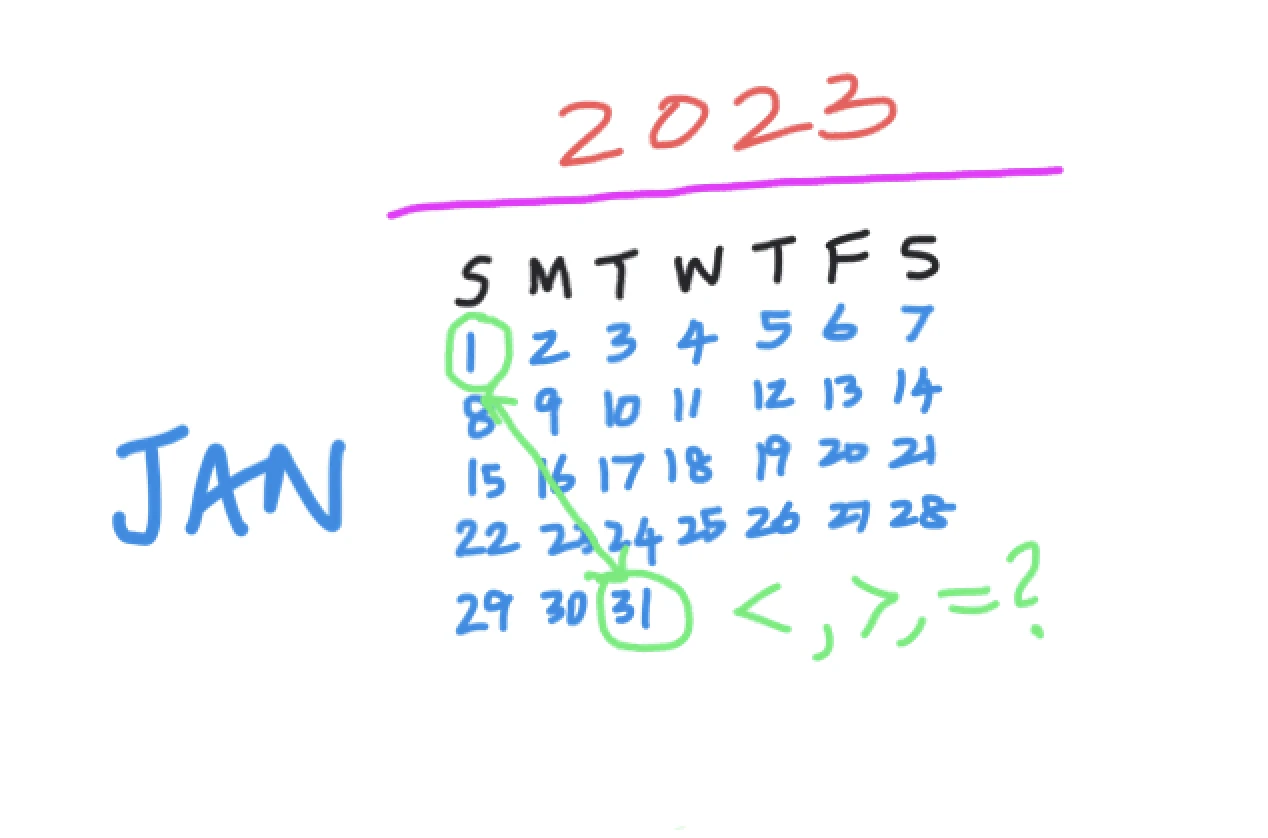Kodeclik Blog
How to compare dates in Python
Python is a popular programming language that provides many built-in functions and libraries to work with dates and times. Comparing dates is a common task in many applications, and Python provides a variety of ways to accomplish this. If you're working with dates in Python, you may need to compare them to find out which date is greater than, equal to or less than another date. \In this blog post, we'll explore how to compare dates in Python using built-in functions and libraries.
Method 1: Using the datetime Module
The datetime module is a built-in Python module that provides classes for working with dates and times. The datetime class represents a date and time object, and we can create instances of this class to compare dates.
Here's an example of how to compare two dates using the datetime module:
from datetime import datetime
date1 = datetime(2023, 1, 1)
date2 = datetime(2023, 1, 31)
if date1 < date2:
print("date1 is before date2")
elif date2 < date1:
print("date2 is before date1")
else:
print("These dates are the same!")Here we are importing the datetime module and setting up two dates. Date1 is the beginning of the year (Jan 1, 2023) and date2 is end of the month of January (Jan 31, 2023). Then we compare these two dates just as if we are comparing integers, using the standard arithmetic symbols.

The output is:
date1 is before date2as expected.
Method 2: Using the dateutil Library
The second method uses the dateutil library, a third-party Python library that provides powerful extensions to the datetime module. It can handle a wide range of date and time formats and provides functions for parsing, comparing, and manipulating dates.
Here's an example of how to compare two dates using the dateutil library:
from dateutil import parser
date1 = parser.parse("2023-01-01")
date2 = parser.parse("2023-01-31")
if date1 < date2:
print("date1 is before date2")
elif date2 < date1:
print("date2 is before date1")
else:
print("These dates are the same!")In this example, we use the parse() function from the dateutil library to convert date strings into datetime objects. We then use the regular
arithmetic comparison operators to compare the two dates and print the result with the same logic as before. The output is:
date1 is before date2So in conclusion, comparing dates in Python is a straightforward task thanks to the built-in datetime module or with third-party libraries like dateutil. By using the methods and libraries discussed in this post, you can perform date-based operations and make your Python applications even more powerful.
If you liked this blogpost, learn about the date_range() function in Python pandas!
Interested in more things Python? Checkout our post on Python queues. Also see our blogpost on Python's enumerate() capability. Also if you like Python+math content, see our blogpost on Magic Squares. Finally, master the Python print function!
Want to learn Python with us? Sign up for 1:1 or small group classes.